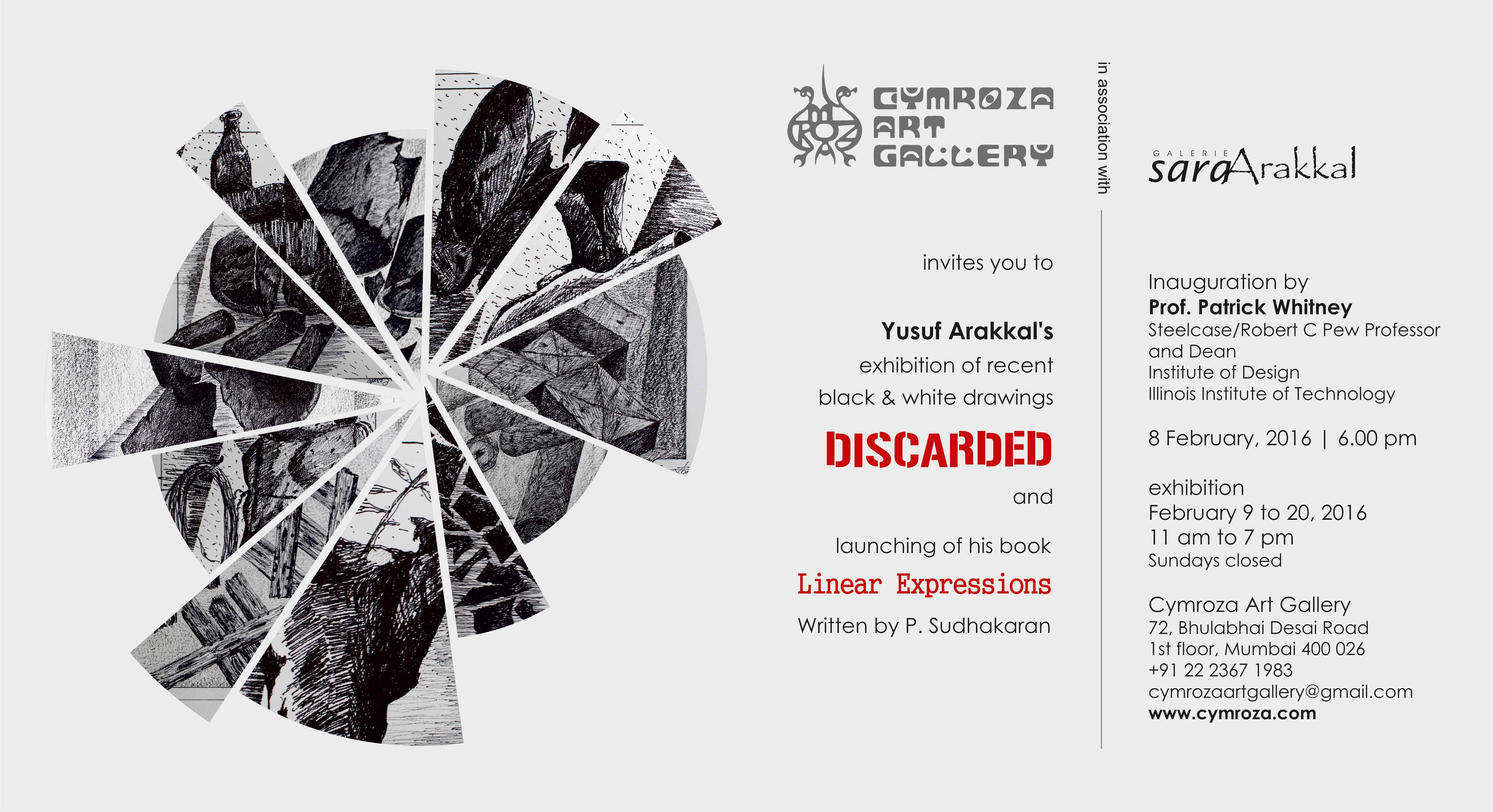8th Feb 2016 - 18th Feb 2016
Discarded-Yusuf Arakkal
Yusuf Arakkal

Yusuf Arakkal.
Diploma in painting from CKP College of Art, Bangalore. One year specialization in graphic print making at GHARHI - the National Academy’s community studio in New Delhi.
Solo shows at New York, London, Katmandu, Singapore, Hong Kong, Limousin, Le Havre, Dubai and several group shows in India. Major international participations are Sao Paulo International Biennale, Brazil, Fukuoka International Biennale, Japan. Dhaka International Biennale, Bangladesh. Indian International Triennale, Delhi. Cairo International Biennale, Egypt and Florence International Biennale, Italy. He won many Indian awards that includes the Karnataka State Academy Award, Kannada Rajyotsva Award, National Award and Venkatappa Award.
Special Award at Bangladesh International Biennale, Dhaka. Lorenso de Medici Silver and Gold Medal at Florence International Biennale 2003 and 2005. Kerala Lalithakala Akademi – Fellowship 2008. Raja Ravi Varma Award from Government of Kerala, Department of Culture for his contribution in the field of contemporary Art, 2012..
His works are in many private and institutional collections all over the world. His works are auctioned by Sotheby’s, Christies, Bonham’s, Asprey of London and New York and by Lara Sati in Singapore. His works are in the collection.
About His Art
Nature, with all its vibrant tones, varied hues of life, has always been a book of reference for Yusuf Arakkal. But it was not the glow and sophistication that enamored him. Beyond the veil of brightness there exists a darker reality, a truth made of solitude, which we pretend not sees. It is from these dark pages of the book of life that Yusuf discovers the creative fire that provokes him.
When Yusuf flips through that book to see and recreate life beyond the four season of nature, there emerges a philosophical search for light. And that search also culminates into a spiritual exploration of the ultimate beauty that no line or word can explain. Even in darkness there is color.
When he grows wild flowers ion the broken pots, he is questioning our urban nations of beauty, which is to superficial, devoid of spirit. In these shattered fragments of the wilder exquisiteness one can see lonely sole searching for love thus interpreting solitude. Beauty is not skin deep, nor is love. Those who are used to canvases with predominant human presents may wonder as to why in ‘Absence’ of the human forms here but, even without the human presence, these broken flower pots, reminiscent of human shells, take the viewer to the music of silence and solitude.
Something that can’t be discarded
When Yusuf Arakkal draws, life emerges out of even the so-called worthless objects… like Van Gogh, who saw the stream of humanity not only in the sunflower fields, but the discarded boots too. He sees verve in everything, as if it is a seed carefully concealing within it a tree in hibernation, which might sprout one day. So, when you see these black and white drawings, you forget those lines and start seeing even the things that are not there; the manifestations of life, its splendours and pains… A bottle that lies on the pavement, scattered into pieces, reminds you of the swift movement of a hand that forcibly threw it over there, thus depriving it of its shape, its identity. And we feel the presence of that hand, invisibly though. An abandoned broken bucket at times takes you to the life of a washerwoman and the dingy lanes where she sweats out for two square meals a day. Yes, the lifeless broken objects here are not just the remainders, but they are the reminders of a life we often discard – the ones that bloom from the fringes. There is a momentum in Yusuf’s drawings that have a flow without break. That is why they becomes the lifelines of his paintings as well.